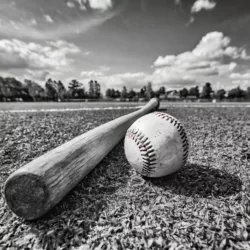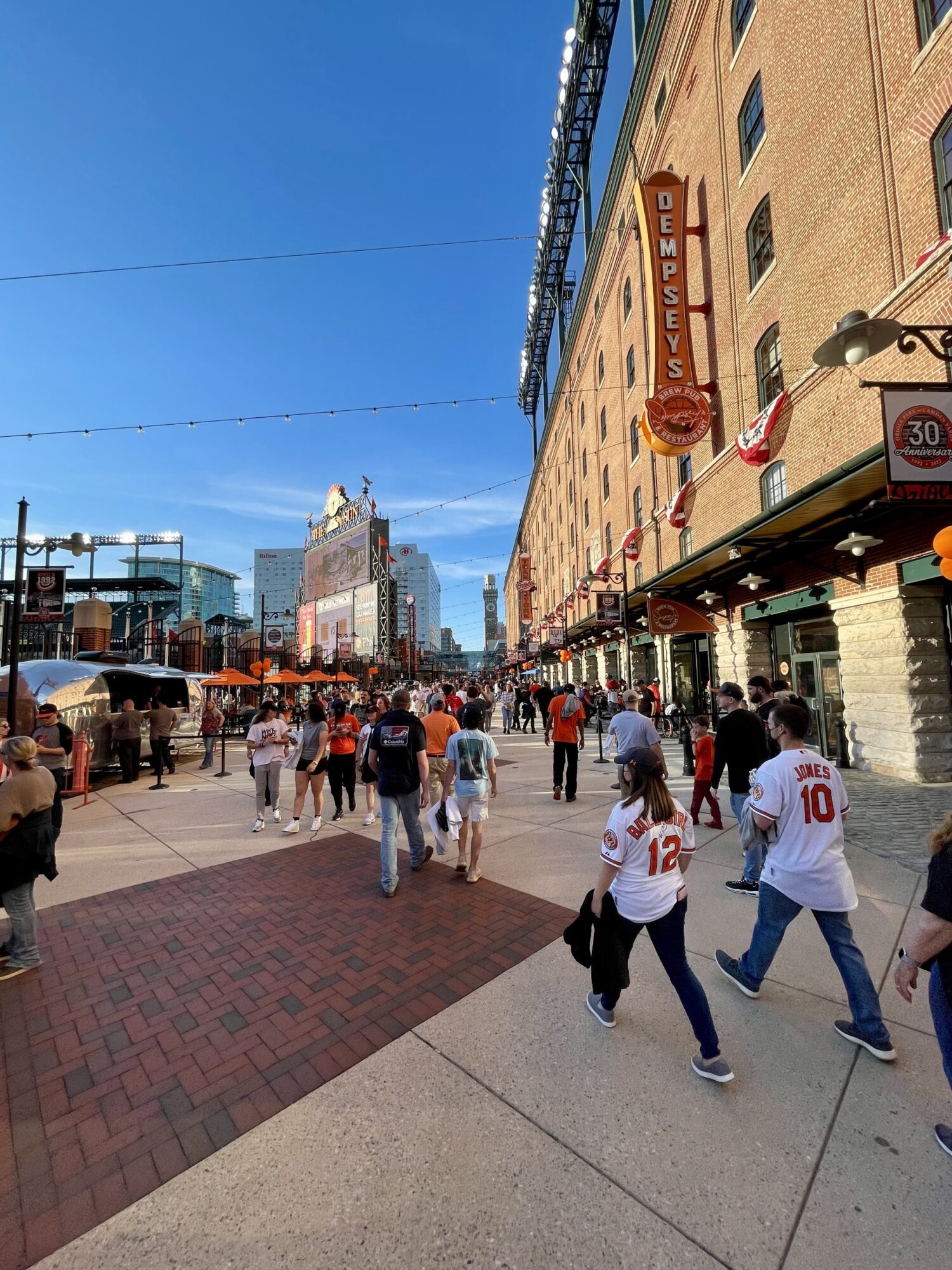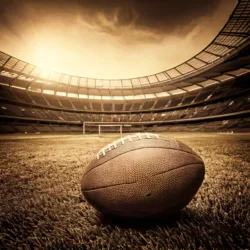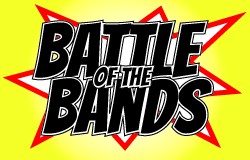Sports
Baltimore Sports History: Negro League Baseball
Wednesday, November 5th, 2025 by The Professor
 Baltimore’s Negro League Baseball: Talent, Community, and Forgotten Glory
Baltimore’s Negro League Baseball: Talent, Community, and Forgotten Glory
by Yukesh Aryal (host of After The Whistle)
When people talk about baseball in Baltimore, they usually mention the Orioles or legends like Cal Ripken Jr. But long before the major leagues were open to everyone, the city was already home to some of the best baseball talent in America in the Negro Leagues. Teams like the Baltimore Black Sox and the Baltimore Elite Giants not only gave fans great baseball but also gave a sense of pride to the city’s Black community during segregation
The story starts in 1913, when the Baltimore Black Sox were founded. They became one of the best-known Black teams in the country. The team’s strong infield earned them the nickname the “Million Dollar Infield” during the 1920s. The Black Sox played their games at Maryland Baseball Park and later Bugle Field, which were more than just ballparks as they were gathering places for families and friends who came to cheer and celebrate together. (more…)
Posted in Explore Baltimore, Featured, Sports, Sports Saturdays | No Comments »
Inside the Lines: The Lamar Jackson Comeback Story Gets Real in Week 2
Monday, September 22nd, 2025 by The Professor
By: Yukesh Aryal, host of After The Whistle
If there was ever a snapshot of what the Ravens’ 2025 season could look like when things go right, whether it means clean offense, big defensive plays, and Jackson in command, it was Sunday against the Cleveland Browns. Lamar Jackson threw four touchdown passes and Baltimore reeled off 21 unanswered points in the second half to steamroll Cleveland, 41-17. It was the perfect rebound after a heartbreaking loss in Buffalo.
Baltimore’s first half wasn’t auspicious, as they managed just 81 total yards and a shockingly few first downs. But everything changed after Halftime. Jackson connected with DeAndre Hopkins and Tylan Wallace in chunk plays, the Ravens’ defense forced two turnovers, and a blocked punt set up a touchdown drive. (more…)
Posted in Sports, Sports Saturdays | No Comments »
Alex Ovechkin Overtakes The Great Gretzky!
Thursday, April 10th, 2025 by Andrew Ciofalo

by Andrew Ciofalo ’25, host of After The Whistle
Wayne Gretzky’s scoring title of 894 goals has been dethroned! Washington Capitals left winger Alexander Ovechkin took over Gretzky’s crown on April 6, 2025, when he surpassed The Great One with goal number 895. Gretzky’s goal record was thought to never be broken, have we just seen the impossible? Well, no not even close. Highly improbably? Probably.
To know the feat that Alex Ovechkin just climbed, you must also know the feat that Wayne Gretzky climbed… Gordie Howe.
Posted in Featured, News, Sports, Sports Saturdays | No Comments »
The New Talk of MLB: Torpedo Bats
Thursday, April 3rd, 2025 by Andrew Ciofalo
 by Andrew Ciofalo ’25, host of After The Whistle
by Andrew Ciofalo ’25, host of After The Whistle
Torpedo Bats have taken the league by storm this year… but what exactly are they? Does the bat itself create more power? Should they be allowed?
To answer all these questions, you need to know what a legal bat is defined as, and what this ‘torpedo’ or bowling pin style bat changes.
Posted in Featured, Sports, Sports Saturdays | No Comments »
Baltimore Sports History: Camden Yards
Thursday, March 27th, 2025 by Andrew Ciofalo
 by Andrew Ciofalo ’25, host of After The Whistle
by Andrew Ciofalo ’25, host of After The Whistle
Baseball season is here! I know Baltimore is ready for another year of going out to the ballpark, bring your friends, family, or meet the other thousands of baseball fans alike at the park. The term “baseball park” really has meaning to me. Whether you associate it with your local baseball diamond, maybe high school or college fields or an MLB stadium, baseball parks give off a certain vibe. I think its important for the right vibe to be given off, and I think (from some good and bad experiences at MLB Stadiums) some parks do better jobs than others. Being a Baltimore Orioles fan, I’m blessed to call Oriole Park at Camden Yards somewhat of a second home.
Posted in Explore Baltimore, Featured, Sports, Sports Saturdays | No Comments »
Tommy John: A Pitcher’s Nightmare
Thursday, March 20th, 2025 by Andrew Ciofalo
 by Andrew Ciofalo ’25, host of After The Whistle
by Andrew Ciofalo ’25, host of After The Whistle
Pitching in baseball over the past decade or so has more and more become a science than just pure talent. Players are trying to improve so much, eek out every ounce of their fastball to get a tick higher average and increase spin rates to higher than ever before. The amount of data and analyzing that is done by coaching staffs nowadays is out of this world compared to just 10-15 years ago. The ways that every inch of the human body is being analyzed to be able to optimize motion in order to simply throw a ball 90ft is mind boggling.
Posted in Featured, Sports, Sports Saturdays | No Comments »
Are Robot Umpires Finally Coming to the MLB?
Thursday, February 27th, 2025 by Andrew Ciofalo
 by Andrew Ciofalo ’25, host of After The Whistle
by Andrew Ciofalo ’25, host of After The Whistle
Baseball season is upon us as Spring Training is in full swing in Florida and Arizona. Teams look to workout prospects, get into game shape and be ready for the start of the 2025 MLB Season. This roughly months’ worth of preparation is key for these players and staffs ahead of a long, 162 game season. But the ball clubs aren’t the only ones preparing and trying out new players.
Posted in Featured, Sports, Sports Saturdays | No Comments »
The Philadelphia Eagles Dethrone the Defending Champions!
Thursday, February 20th, 2025 by Andrew Ciofalo
 by Andrew Ciofalo, host of After The Whistle
by Andrew Ciofalo, host of After The Whistle
The Eagles defeated the Kansas City Chiefs in blowout fashion, winning Super Bowl LIX by a score of 40-22. Although this looked to be a high scoring game, the Eagles won in old school ways that we might be learning is still the most important part of football. The key to this game was dominating and winning in the trenches. This has been and looks to continue to be the key to win football games in the NFL. Both teams have very great and stout defensive lines that were going to be key in this matchup. It was just a matter of which of its counter parts could hold up the most.
Posted in News, Sports, Sports Saturdays | No Comments »
Who Will Stop The Kansas City Chiefs?
Thursday, February 6th, 2025 by Andrew Ciofalo
 by Andrew Ciofalo, host of After The Whistle
by Andrew Ciofalo, host of After The Whistle
The NFL seems to have just one major theme over the past couple of years: Can anyone take down the Kansas City Chiefs?
So far, it’s looking like no one will. The Chiefs will be playing in their 4th Super Bowl in the past 5 seasons. On top of that, it is well known that this year they have the chance to win a record setting 3rd Super Bowl in a row. Their previous 2 have come against the San Francisco 49ers last year and the Philadelphia Eagles the year before. The Chiefs will play the Eagles in the Super Bowl once again this year, only 2 years removed from their last Super Bowl matchup. These two teams have dominated regular play these last couple years. A rematch of titans, one might say.
Before talking about the Super Bowl, let’s look at how both teams got there.
Posted in Featured, Sports, Sports Saturdays | No Comments »
Baltimore Sports History: Johnny Unitas
Thursday, November 28th, 2024 by Andrew Ciofalo
 by Andrew Ciofalo, host of After The Whistle
by Andrew Ciofalo, host of After The Whistle
There are a few names of legend here in Baltimore when it comes to its sports teams. Famous Oriole’s like Brooks and Frank Robinson, Cal Ripken Jr., Jim Palmar come to mind. In the football world, you have great Ravens like Ray Lewis, Ed Reed and Jonathan Ogden. All of which are in their respective Hall of Fames. But among those names is an icon of Baltimore sports; Johnny Unitas. Also known as “the Golden Arm” and “Johnny U,” Unitas played for the Baltimore Colts from 1956 to 1972. An undersized boy in high school and college turned out to be the greatest choice the Colts could have made.
Johnny Unitas was born in Pittsburgh, Pennsylvania in 1933 and was one of four kids. His family was very hard working as his father owned a coal delivery business. Sadly his father passed away when Unitas was 5 and his mother took over the business as well as working as an office cleaner. Johnny Unitas’ upbringing is probably what lead to his very humble and down to earth character.
The interest and football playing career started in high school as he played Quarterback for St. Justin’s High School in Pittsburgh. His talent attracted lots of fans to their games, partly because of his ability to throw a 60-yard jump pass that would wow the crowd. In his senior year, Unitas was named the quarterback of Pittsburgh’s All-Catholic High School, further propelling his résumé as he looked to play college football.
However, big schools had a glaring problem with Unitas as he worked to try out in front of scouts, his figure. Johnny U graduated high school standing at 6’0” and around 140 pounds, not ideal for a football player. He dreamed of playing for the Notre Dame Fighting Irish as a kid but when he tried out for quarterback, Notre Dame passed on him because head coach Frank Leahy thought he’d get hurt on the field at his weight. University of Pittsburgh also withdrew a scholarship offer for the same reason. In the end, Unitas went to University of Louisville on a scholarship. Unitas went through a lot of injury riddled seasons at Louisville, but again, his play spoke for himself. His play demanded respect when he was out there.
Unitas graduated from Louisville in 1955 and was drafted shortly after in the ninth round by the Pittsburgh Steelers. He entered a quarterback room that already had a veteran starter in Jim Finks and a second-year player in Ted Marchibroda. Unitas was familiar with Marchibroda, his first start in college was against Marchibroda’s St. Bonaventure University, Ted’s team came out on top 22-21. Because of the already packed quarterback room, and the fact that Steelers head coach Walt Kiesling said Unitas was “too dumb” to play quarterback. He was cut before the season started and wasn’t given a chance to see the field.
After being cut, Unitas played for a local semi-professional team in Bloomfield, New Jersey as he continued to try and stay ready and prove his worth. Finally in 1956 he was given that shot after he tried out for the Baltimore Colts and was awarded a contract to be the back-up quarterback. In his first season of backing-up George Shaw, he came into replace Shaw after he broke his leg in the Colts’ week 4 game against the Chicago Bears. Unitas ended the season throwing 9 touchdowns and a record of 3-4. Although he didn’t have the best stats or record, he earned the starting job for the 1957 season and beyond.
In his first season starting, Unitas lead the league in passing yards with 2550 and had 24 passing touchdowns. He was also awarded the Jim Thorpe Trophy at the end of the year for MVP of the National Football League. Unitas’ stellar play led the Colts to their first winning season, finishing at 7-5. The following 1958 season was the big breakout season for the Colts. Unitas finished the year with a 8-1 record, with the team finishing 9-3. Unitas was awarded to the leagues All-Pro team and finished second in MVP voting. The Colts were set to play the winner of the Eastern Conference championship. The game was played between the New York Giants and Cleveland Browns, both of which finished the regular season tied at 9-3 and needed the one game tiebreaker.
The 1958 NFL Championship Game went down in history and is known as “The Greatest Game Ever Played.” The Western Conference winning Baltimore Colts took on the Eastern Conference champions, the New York Giants. The game is so famous for the Colts’ drive late in the 4th quarter to tie the game up at 17. Unitas led the Colts offense down the field with 2 minutes remaining, becoming known as the first ever 2-minute drill. The Colts forced overtime with a field goal at the end of the drive and went onto win the game in overtime via an Alan Ameche 1 yard touchdown to cement the Colts’ first NFL Championship victory. The game was broadcasted nationally by NBC and gave professional football a major popularity boost going into the 1960s.
Johnny Unitas would go onto win 2 more NFL Championships in 1959 and in 1968. He’d also help the Colts win Superbowl V in 1970 against the Dallas Cowboys. Individually, he won the AP MVP award 3 times, awarded pro-bowl honors 10 times, and was named All-Pro 5 times. Unitas played 18 years in the NFL, 17 of those with the Colts. His final season he played on the San Diego Chargers and only appeared in 5 games.
Johnny Unitas’ legacy was cemented into the Pro Football Hall of Fame in 1979. When he retired, Unitas lead the NFL in career passing yards, passing attempts, passing completions, and passing touchdowns. Along with his illustrious playing career in Baltimore, Unitas ‘disowned’ the Colts when Robert Irsay moved the team to Indianapolis. When the Cleveland Browns came to Baltimore, he helped welcome the team and fans took to Unitas’ adoption of the new Baltimore Ravens. His statue stands tall outside of M&T Bank Stadium and he is in the Ravens’ Ring of Honor.
One of the greats, Johnny U will live in the hearts of Baltimore for years to come.
Posted in Featured, Sports, Sports Saturdays | No Comments »












